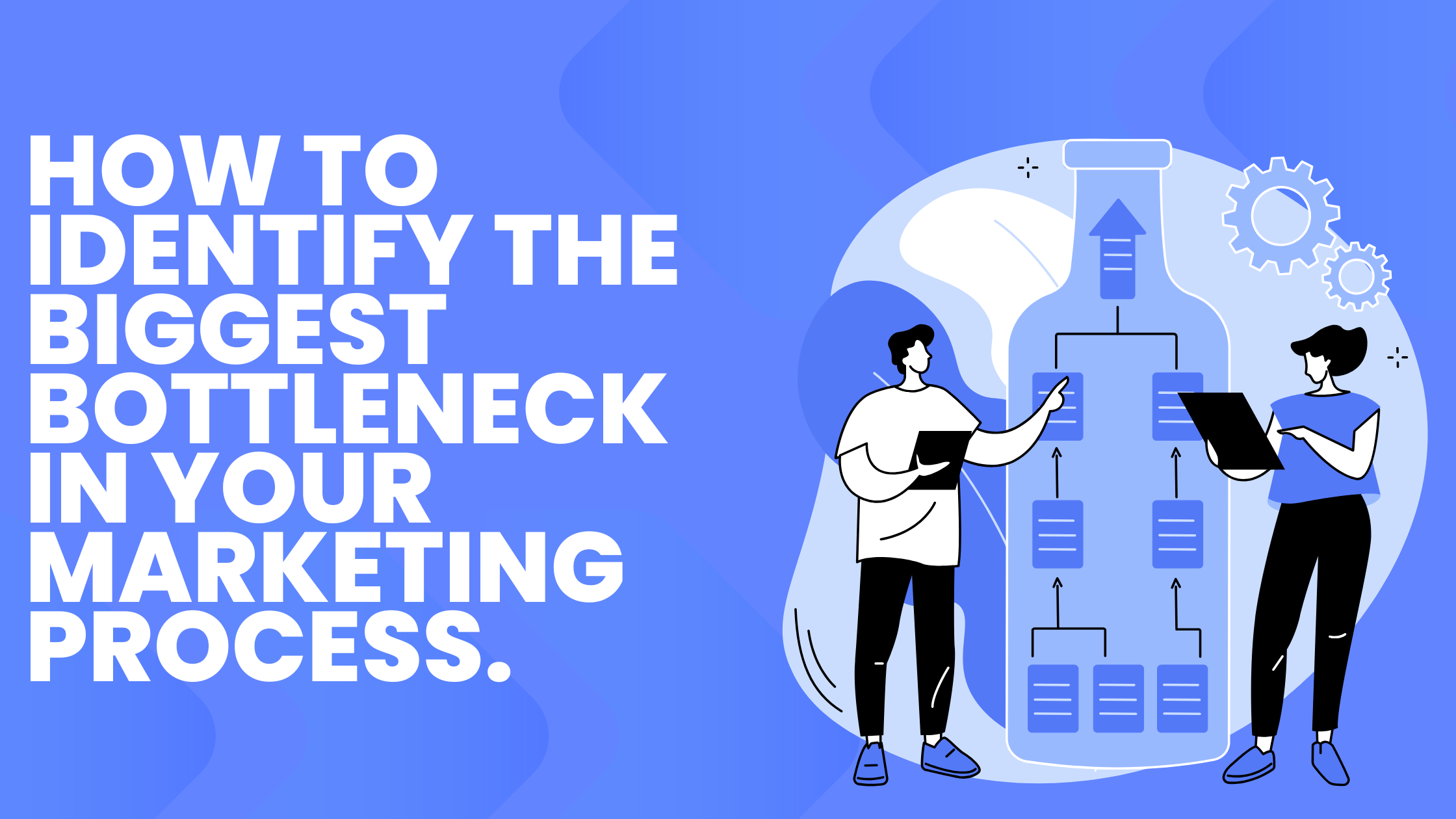How to Identify the Biggest Bottleneck in Your Marketing Process.
As a business owner, it often feels like there’s never enough time to tackle everything on your marketing to-do list.
You’re juggling client demands, running your business, and trying to maintain a marketing presence all at once. It’s easy to feel overwhelmed and unsure of where to focus your limited time and energy. The solution? Identify and address the biggest bottleneck in your marketing process.
But how do you figure out what that bottleneck is, especially when everything feels equally urgent? This guide will help you pinpoint the exact issue that’s holding back your marketing efforts, so you can address it effectively and get back on track.
1. Review Your Marketing Goals
The first step in identifying a bottleneck is to revisit your marketing goals. What are you aiming to achieve? Whether it’s driving website traffic, generating leads, or improving brand awareness, having clear goals will help you identify which part of your marketing process isn’t working.
Ask yourself:
- Are we consistently reaching our target audience?
- Are our marketing efforts aligned with our business objectives?
- Are we seeing measurable progress toward these goals?
When your goals are fuzzy or unclear, it’s hard to know where you’re falling short. Clarifying these objectives will make it easier to see which specific area needs attention.
2. Examine the Data
Data is your best friend when it comes to identifying bottlenecks. Review the metrics from your marketing efforts—website traffic, social media engagement, email open rates, and conversion rates. Which areas are underperforming?
For example:
- If your website traffic is low, the bottleneck might be your content strategy or SEO.
- If engagement on your social media posts is low, it could be a content relevancy issue.
- If conversion rates are down, you might have a problem with your calls to action or landing pages.
Look for trends and patterns that point to where things aren’t working as well as they should.
3. Assess Your Time and Resources
Another key factor in identifying bottlenecks is recognizing where you or your team are struggling with time and resources. Ask yourself:
- Which tasks take up the most time but yield the least results?
- Where are we consistently falling behind or delaying projects?
- Are there certain tasks that keep getting pushed to the back burner?
Often, the biggest bottlenecks are the tasks that consume time and energy without driving the expected results. For instance, you may be spending hours creating social media content that isn’t converting into leads, meaning your content strategy might need refining.
4. Get an Outside Perspective
When you’re deep in the day-to-day operations of your business, it’s easy to overlook key issues that might be obvious to someone else. That’s why it can be incredibly helpful to get an outside perspective on your marketing efforts.
Consider:
- Asking someone in a different department or an external consultant to review your marketing process.
- Having a trusted colleague or mentor look at your metrics or strategy.
- Running your ideas by someone who isn’t directly involved in the marketing process.
Often, a fresh set of eyes can reveal insights you may have missed, helping you to see where the real problem lies.
5. Break Down the Process
Marketing isn’t just one thing—it’s a series of interconnected tasks and strategies. When trying to identify a bottleneck, break down your marketing into its individual components: content creation, distribution, engagement, conversion, and analytics.
Look at each step and ask:
- Which stage takes the most effort for the least return?
- Where do things seem to stall or break down?
- Is there a consistent issue at one stage that’s affecting the whole process?
For example, if you’re great at creating content but struggle to distribute it effectively, your bottleneck might be in your distribution strategy.
6. Prioritize What Will Make the Most Impact
Once you’ve identified potential bottlenecks, the next step is to prioritize which one to tackle first. Focus on the bottleneck that will have the most immediate impact on your overall marketing success.
Some questions to help prioritize:
- Which issue is most directly linked to achieving your goals?
- Which bottleneck, when resolved, will unlock the most value in your marketing efforts?
- What can be addressed quickly with minimal resources?
By focusing on the most critical issue, you’ll be able to make tangible improvements without feeling overwhelmed by trying to fix everything at once.
7. Take Action on One Thing at a Time
It’s tempting to want to fix all your marketing problems at once, but this can lead to burnout and frustration. Instead, focus on resolving one bottleneck at a time. Choose the most important or pressing issue, develop a plan to address it, and measure the results before moving on to the next area.
By simplifying your approach and focusing on small, incremental improvements, you’ll make steady progress and prevent the process from becoming overwhelming.
Final Thoughts
Identifying the biggest bottleneck in your marketing process isn’t about overhauling everything at once. It’s about finding that one key issue that, once addressed, will make the biggest difference to your results. By reviewing your goals, analyzing data, getting feedback, and breaking down your marketing process step by step, you’ll be able to pinpoint what’s holding you back and make progress without feeling stuck.
Remember, it’s not about doing more—it’s about doing what matters most. One improvement at a time.






